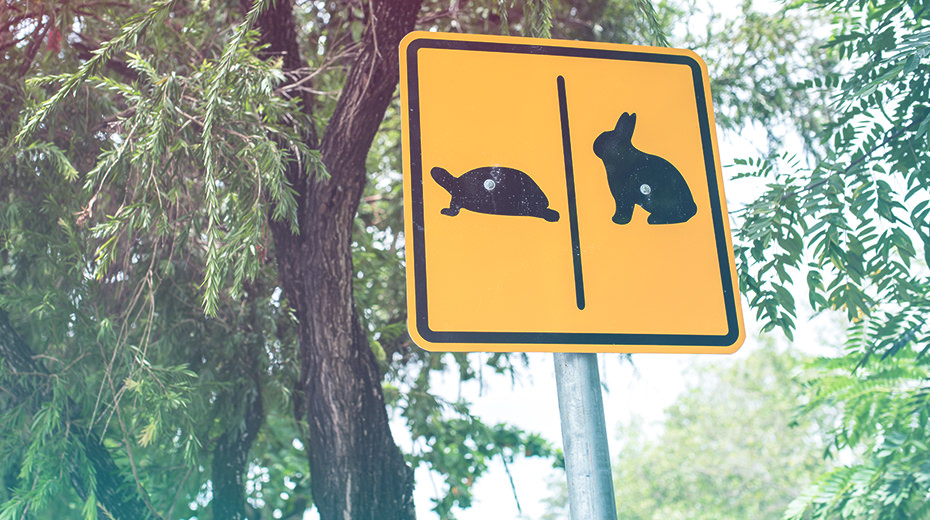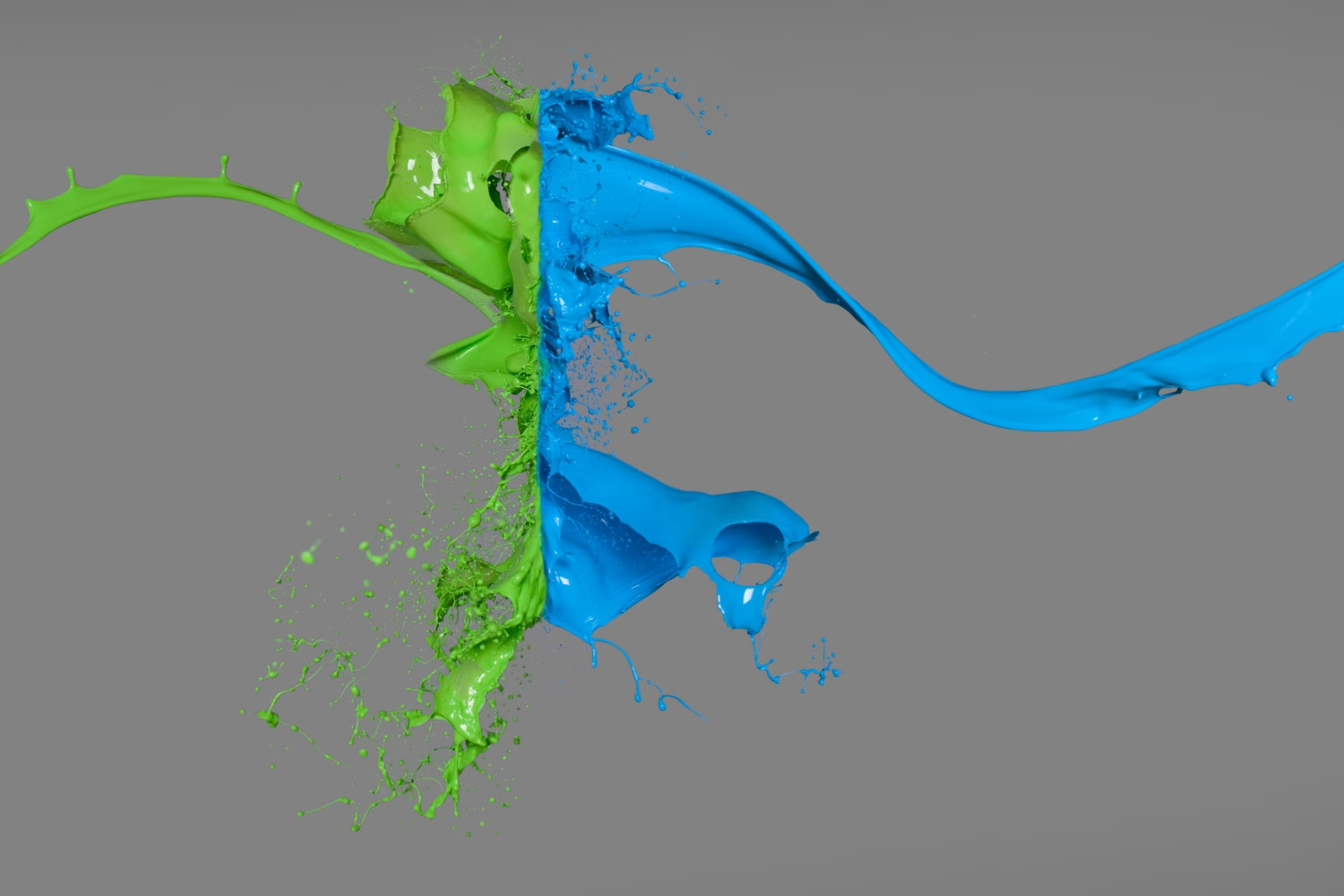The Tortoise and the Hare of B2B Marketing

Share this story
B2B brand strategies have always competed against demand gen in terms of where to invest time, money and effort. When you look at balancing long-term and short-term goals, it is obvious that brand is the tortoise, while demand demonstrates its quick hare-like agility to transform acquisition into conversion.
However, as the Aesop fable taught us, we should not discredit the slower-paced strategies. In fact, in the B2B world, it is not even a race at all. I would like to propose my own version of the fable, one in which tortoise and hare run on parallel tracks — the former on an ongoing marathon and the latter on a series of sprints over hurdles — throughout the entirety of the buyer’s journey.
Runners! On your marks!
At the starting line of a conversion sprint, we have demand gen, crouched and ready to hop. Demand’s short-term tactics excite buyers with a sense of urgency around a specific product or service offering. Demand has one thing on its mind and that is the finish line. The conversion from top of the funnel to middle to bottom. Prospective buyer to customer.
More than ever, marketing is seen as a revenue center, not a cost center — goals are aligned with contributions to the pipeline. The need to make direct contributions is prioritized. Demand’s marketing results are immediate, easier to capture and faster to measure, making a demand gen strategy the star athlete who gets all the praise.
On a parallel track, stretching its scaly limbs for the marathon ahead, is brand. This long-distance athlete is truly more focused on the journey than on the destination. For brand, it is all about consistency and sustainability in order to produce growth — in awareness, reputation and maturity. However, brand’s results take more time to measure than its furry partner. Brand’s approach to building awareness through advertising, digital marketing, thought leadership, creative, culture and more can and will produce results. The challenge is, how do you measure those miles to show brand is contributing?
While there are lots of ways to measure the success of your brand strategy, it generally requires assumptions and a qualitative perspective to directly link it to your pipeline. With long buying cycles, marketers are not generally going to see an immediate correlation between a prospective customer reading a series of blogs and case studies then making a buying decision based on that content.
The good news is, digital transformation has opened the possibility of making these measurements more tangible. Marketing teams can now implement marketing automation and data analytics to help them track engagements with content. It is not a perfect system, but think of these analytics as hydration needed for a marathon runner to keep pace and stay in the race for the longer term.
Get set!
Now that our runners are properly hydrated, limbered and warm, it is time to prepare those strategies to launch at the sound of the starter pistol. Both brand and demand campaigns need to be ready to start the race together. While their independent finishing lines will vary, both tortoise and hare are supporting each other’s efforts along the way.
A survey from LinkedIn, IPA, Les Benet and Peter Field identified the imperative for brand and demand to work together to target new customers while sustaining existing accounts. This can be achieved when the tortoise and hare take note of each other’s strategies. For instance, while demand efforts are quick to measure, they needs brand strategies to grow awareness. After all, if no one knows about your brand, then why would they be interested in your products?
Both brand and demand campaigns need to be ready to start the race together.
However, always remember, the brand and demand race is not sequential. The runners are not handing off a baton once a strategy is complete. Marketers need to invest in both long-term and short-term efforts and measure ROI over the full length of the sales cycle.
Go!
At the sound of the pistol, our runners take off. Demand hops into action, leaping over hurdle after hurdle. Meanwhile, brand scoots along its path, allowing its long-term strategy to push its four legs into a consistent motion.
A solid brand strategy is sustained by authenticity. It is important for any B2B organization to believe in what they are advertising. In fact, more than believe — your organization has to live it. That is the only way you can make personal connections to your buyers. Whatever product or offering you are selling, you need to see the human behind the ad and make sure your message resonates with your target audience. Buyers want to do business with a brand that stands for something in the marketplace.
I’ve seen studies that say 90% of the decision-making process is emotional. When it comes time for a buyer to act, that choice is driven by emotions. Here is where demand gen tactics truly showcase their athleticism. Our B2B hare is thrust into success when it uses that emotional connection with a buyer.
It’s all about buyer enablement. Buying is difficult to say the least, especially on the B2B side where the hurdles are incredibly high to choose the right company to go into business with. As marketers, we need to help enable buyers to feel confident and informed along the way so when they get to the decision point, they are ready to buy and demand gen can leap over that hurdle with ease.
90%
of the decision-making process is emotional.
b2bmarketing.net, "B2B decision-making is getting very emotional"
A photo finish!
While the tortoise and the hare have different methods to achieve success, it is important to remember they are running with the same objective. Brand is forever placed on an ongoing jog, putting one tactic in front of the other, building awareness and sustaining authentic connections with buyers. These connections will help to elicit emotional responses from buyers who have been watching the race from the sidelines. The buyers are eager to watch and learn who the brand is (awareness), what they stand for (reputation) and how the brand’s products and services will help them reach their professional goals. A successful demand gen strategy will leap over many hurdles in that timeframe by using that awareness and reputation created over time. In fact, it is almost as if the pair are not on separate tracks at all. Instead, brand continues its course navigating the length of the track under the hurdles while demand leaps, lands, rides and repeats on the secure, shelly back of its consistent brand partner.


